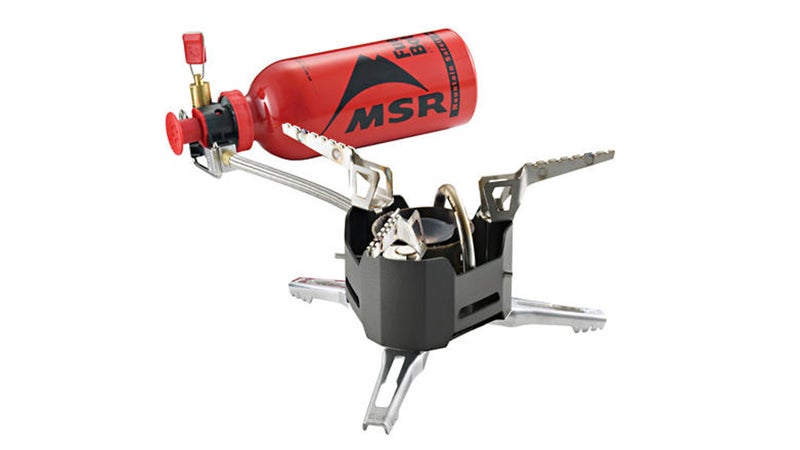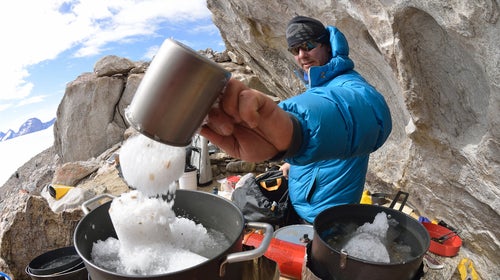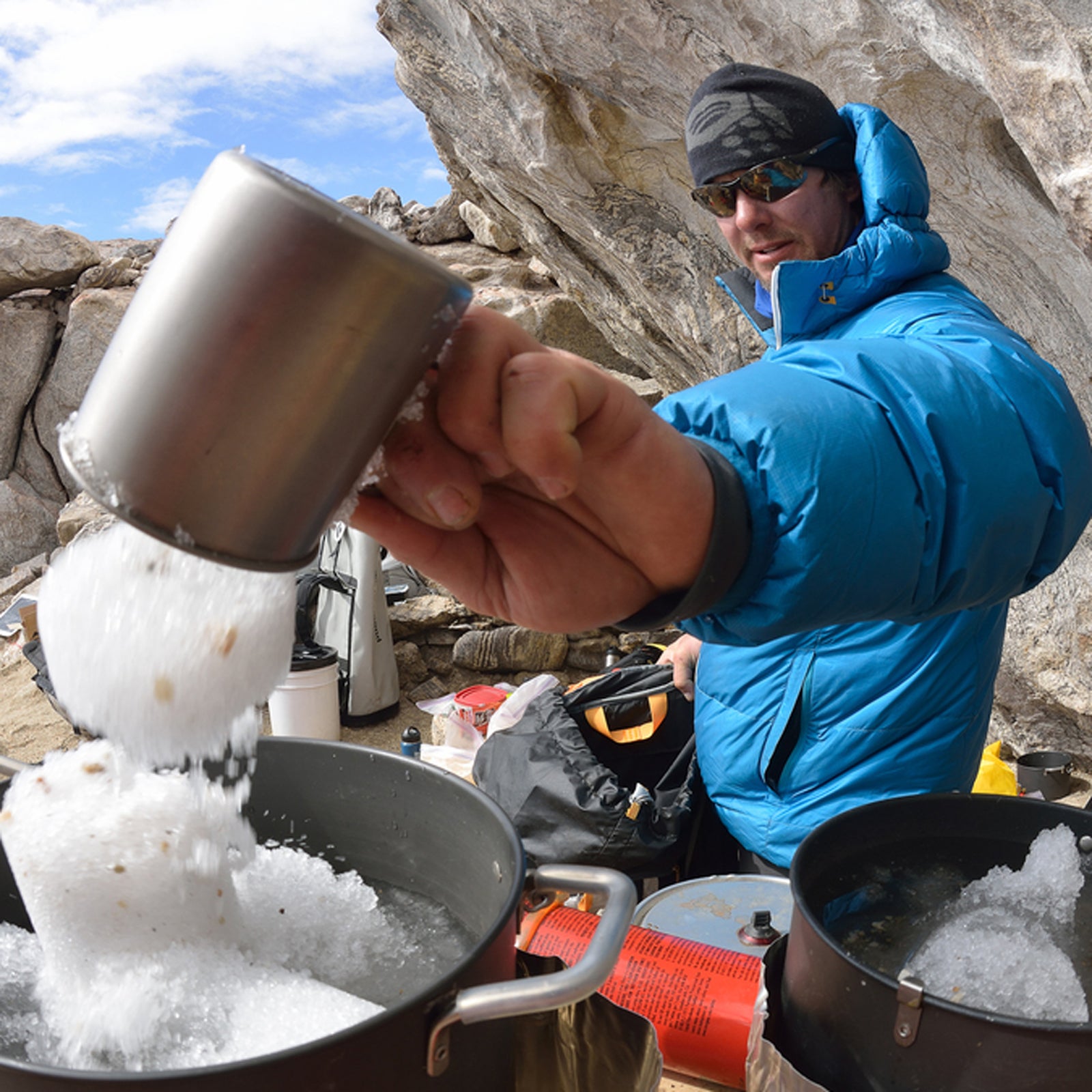Professional explorer has burned through a lot of gear on the 85 expeditions heÔÇÖs done to some of the worldÔÇÖs most remote places. HeÔÇÖs experienced the harshest conditions Mama Nature deals out, like minus 67 degree temperatures┬áin Siberia and┬áblazing-hot jungles in Bhutan. In those situations, he canÔÇÖt count on unreliable products.
Over the past ten years, heÔÇÖs taken the same two ┬á ($160) on every single expedition. (Libecki is sponsored by MSR.) ÔÇťYou can take a hammer and beat an ice casing off of it, then fire that thing right up,ÔÇŁ he says. ÔÇťItÔÇÖs always the workhorse that gets stuff done.ÔÇŁ
Libecki says the XGK is ÔÇťwhat matters mostÔÇŁ during his trips to┬áextremely cold environments. ÔÇťBottom line isÔÇöyou go out to Antarctica or GreenlandÔÇöif your stoves fail, your trip is done, but maybe your life, too,ÔÇŁ he┬ásays. ÔÇťYouÔÇÖre melting every single drop that youÔÇÖre drinking, because youÔÇÖre living in a freezer.ÔÇŁ
The reason heÔÇÖs entrusted his life to the same two stoves for the past decade? The XGK always works.

I spoke with Owen Mesdag, senior product developer at MSR, to find out why. It turns out that the stoveÔÇÖs reliability is a result of simple design. You pour liquid fuel into your bottle, pressurize it by pumping, and just open the valve to deliver the fuel to the burner. ÔÇťIf you could somehow swim through the fuel channel, you would be able to go from the fuel bottle through the pump, down the hose, through the generator loop, and out the hole in the fuel jet,ÔÇŁ Mesdag says. ÔÇťItÔÇÖs completely open.ÔÇŁ
That open channel makes it remarkably easy to repair in the field, and it also cuts down possible mechanical failures over the life of the stove, unlike more complicated canister versions. ÔÇťIf you were to run water through your garden hose, your hose isnÔÇÖt going to break from running water through it,ÔÇŁ Mesdag says. ÔÇťItÔÇÖs just a delivery system. ItÔÇÖs how to control liquid fuel from a pressurized vessel and release it in a usable form.ÔÇŁ
Libecki has not only used the XGK on dozens of expeditions, but sometimes for hundreds of hours per trip,┬ádue to┬áhow much time it takes to melt water. And that requires a lot of fuel. Luckily, the stove can run on just about anything combustible. ÔÇťYou go to all of these places around the world, and fuel options are usually limited,ÔÇŁ he says. ÔÇťYou might have benzene, you might have diesel fuel, you might even have jet fuel, but you could put Bacardi 151 in this thing.ÔÇŁ
And if that combustible fuel has serious contamination that gums up the stove? The XGK has an inner lining built specifically to be removed, and used as a pipe cleaner for the main hose. Additionally,┬áa hair-thin shaker needle lives inside the jet and┬áactively cleans the jet when the stove moves around (for example, while youÔÇÖre walking to base camp and itÔÇÖs┬ámoving┬áfrom side to side in your pack).
Finally, its physical durability is the result of the simple metal three-leg, three-arm stand surrounding the stove itself. Libecki regularly swings the stove like a weapon into a rock or hits it with an ice ax┬áto remove ice from the exterior. ÔÇťYou can just beat up the outside.┬áThe worst you are going to do is dent it,ÔÇŁ Mesdag says. ÔÇťWe machine and bend all of our parts together in-house, so we know how strong they are.ÔÇŁ
For all its simplicity, though, the XGK is not an easy stove to learn how to use. You need to know how to pressurize it and preheat it before you can get it fired up, which takes some time. Canister stovesÔÇölike the WindBurner from MSR or most of JetboilÔÇÖs offeringsÔÇöcan be taken right out of the box, connected to fuel, and get you cooking with the click of a button.
Mesdag likens this to driving a stick-shift vehicle. ÔÇťIf you get in an automatic, you can just go, which is great until it breaks,ÔÇŁ Mesdag says. When it comes to stoves, that payoff is arguable for a weekend summer backpacking trip, where a broken stove means cold ramen for dinner. It absolutely isnÔÇÖt OK for polar explorers like Libecki.


